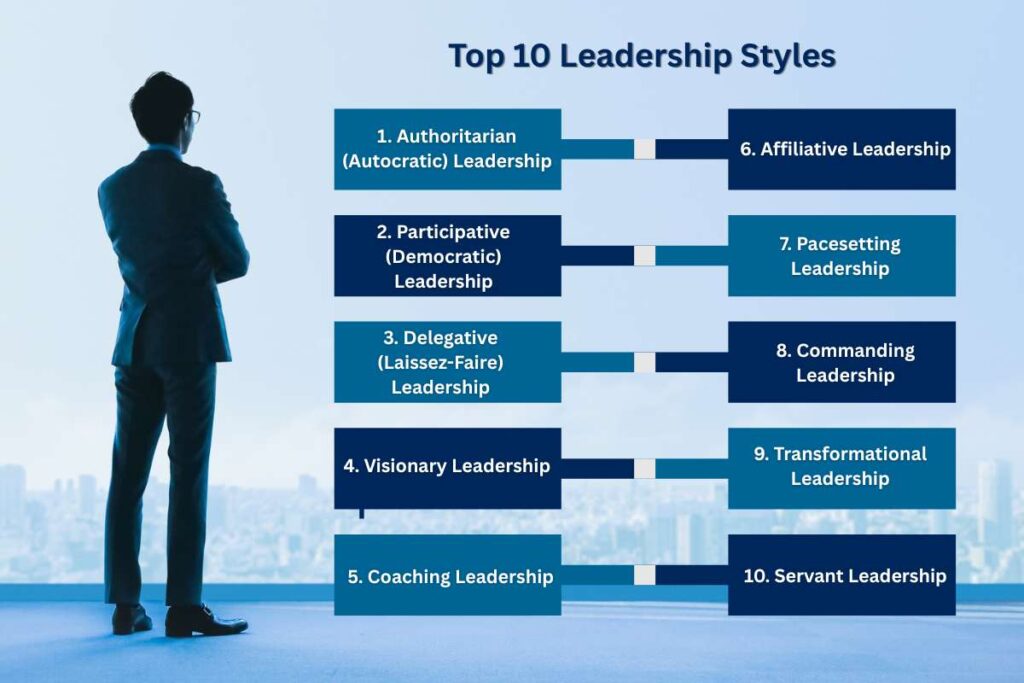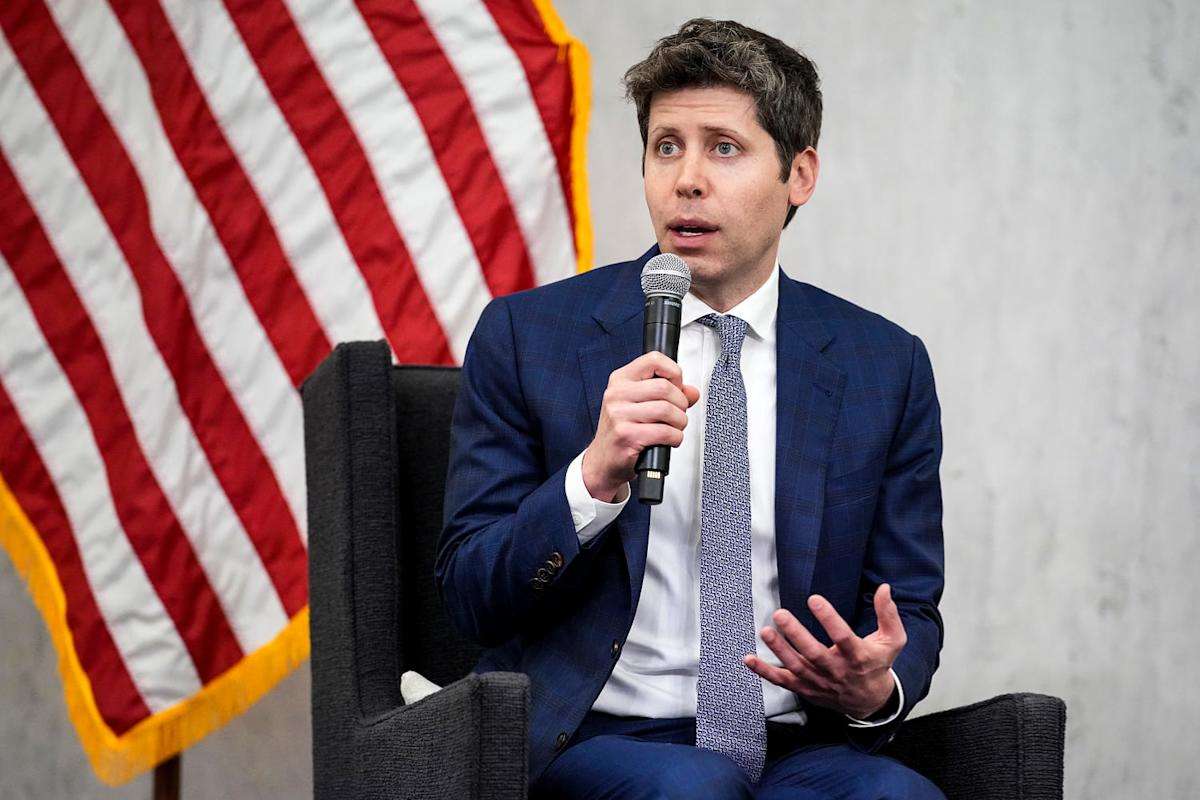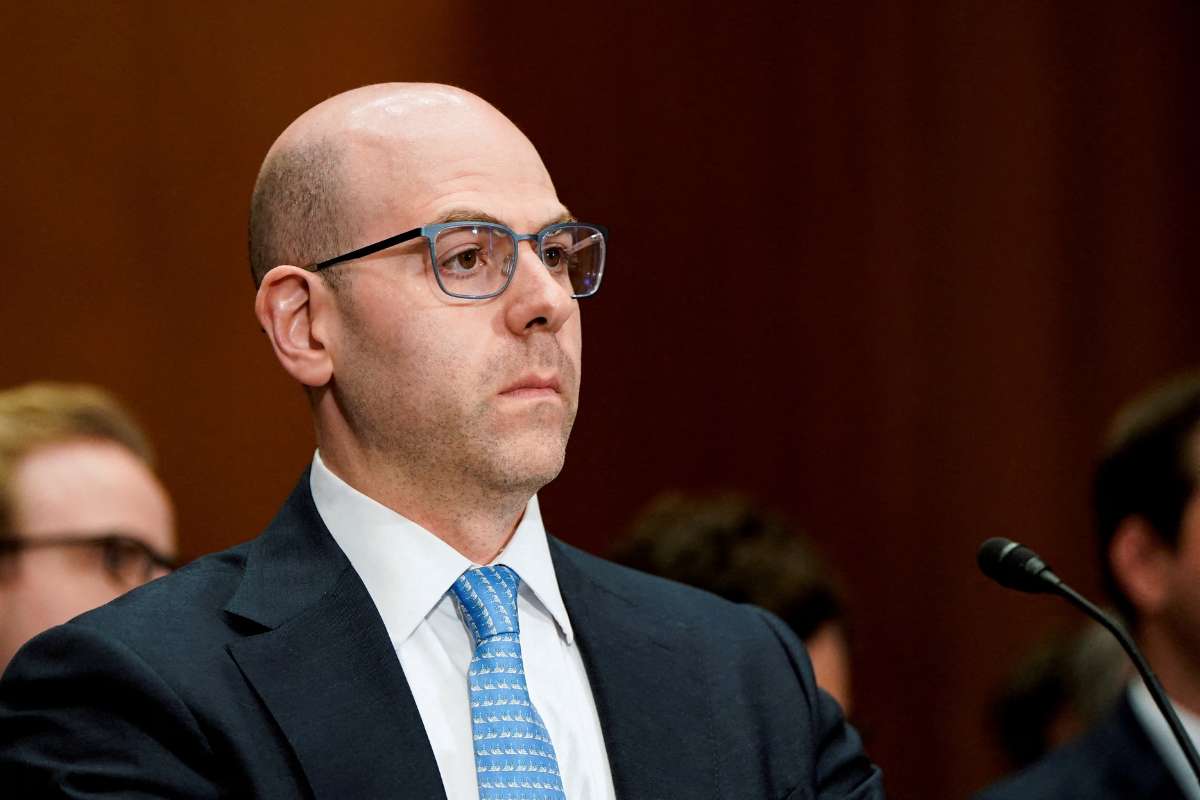Leadership is the invisible hand that guides organizations, cultures, and even countries toward success. But what makes a great leader? Is it the ability to take bold, decisive actions? Or is it the skill to listen, inspire, and nurture growth?
The truth is, there isn’t one single formula. Leadership comes in different shapes, and each style has its strengths, weaknesses, and ideal context. Research proves this, too, according to Gallup, managers account for 70% of the variance in team engagement. That means a leader’s style directly impacts motivation, productivity, and retention.
In this article, we’ll dive into 10 leadership styles, each explained with real-world examples, data-driven insights, and practical takeaways. By the end, you’ll not only understand these styles but also learn how to adapt them to your unique journey.
Here are the top 10 leadership styles with real-world examples and practical takeaways:

1. Authoritarian (Autocratic) Leadership
Authoritarian leaders make decisions quickly and expect compliance. While often criticized, this style shines in crises where speed is everything.
| Strengths | Fast decisions, strong control, useful in crises |
| Weaknesses | Risk of low morale, limited innovation |
| Best Fit | Manufacturing, emergency response, and military |
Take Elon Musk, his strict deadlines at Tesla and SpaceX are classic autocratic moves. They push teams to deliver groundbreaking results, though sometimes at the cost of burnout. Similarly, in the early days of COVID-19, governments worldwide used decisive measures to control the crisis, as an example of how leadership styles can save lives in emergencies.
Key takeaway: Use this style sparingly; it’s effective for control and clarity, but too much stifles creativity.
2. Participative (Democratic) Leadership
This style thrives on inclusion; leaders invite ideas and build decisions together. It boosts innovation, but yes, it takes longer.
| Strengths | Builds trust, sparks innovation, and increases ownership |
| Weaknesses | Time-consuming, risk of decision gridlock |
| Best Fit | Creative industries, education, and collaborative workplaces |
Mary Barra, CEO of General Motors, demonstrates this by holding regular town halls and valuing employee input, which helped the company recover from crises and lead in EV innovation. A 2025 study even found that democratic leadership styles directly improve psychological safety, making employees more willing to take risks.
Key takeaway: Perfect when you want creativity and buy-in, less ideal when you need split-second decisions.
3. Delegative (Laissez-Faire) Leadership
Here, leaders trust their teams to run with the ball. It works brilliantly with skilled people, but risks chaos without structure.
| Strengths | Freedom, ownership, creativity |
| Weaknesses | Lack of structure, risk of chaos |
| Best Fit | R&D labs, creative startups, self-driven teams |
At Duolingo, co-founder Severin Hacker’s mantra is “reduce, automate, delegate.” By giving his teams freedom, he focused on AI innovation. The payoff? Over 46 million daily users and a stock surge of 190% in a year.
Key takeaway: Delegation drives ownership and innovation, but you need clear vision and accountability to avoid missteps.

4. Visionary Leadership
Visionary leaders inspire with a picture of the future. They don’t just manage, they ignite.
| Strengths | Inspires loyalty, drives transformation |
| Weaknesses | Can overlook practical execution |
| Best Fit | Tech, social impact, organizations in transition |
Satya Nadella’s transformation of Microsoft into a cloud-first, AI-driven powerhouse is a powerful example. Under these leadership styles, Microsoft’s value jumped from $300 billion in 2014 to $3 trillion in 2024. Employees weren’t just executing tasks; they were rallying behind a mission to empower people globally.
Key takeaway: Vision creates momentum, but without execution, it’s just a dream. Pair inspiration with action.
5. Coaching Leadership
Coaching leaders focus on growth. Instead of just delivering results, they invest in developing their people’s skills for the long game.
| Strengths | Builds future leaders, strengthens loyalty |
| Weaknesses | Time-intensive, not effective for urgent results |
| Best Fit | Organizations prioritizing employee growth, education, and startups |
Eric Schmidt, former CEO of Google, famously mentored leaders like Sundar Pichai and Marissa Mayer. That culture of growth outlasted his tenure and continues to fuel Google’s success. According to LinkedIn’s 2024 Workplace Learning Report, 76% of employees are more likely to stay at companies with coaching-oriented leadership styles.
Key takeaway: Coaching pays off in loyalty and future-ready teams, but it requires time and patience.
6. Affiliative Leadership
This style thrives on empathy and harmony; it’s about putting people first and creating emotional bonds.
| Strengths | Boosts morale, fosters loyalty, improves teamwork |
| Weaknesses | Risk of overlooking poor performance |
| Best Fit | Teams in conflict, employee-centric cultures |
During the pandemic, Arne Sorenson, the late CEO of Marriott, sent an emotional video message to employees while battling cancer himself. His reassurance that staff well-being came before profits made him a global example of one of the affiliative leadership styles in action.
Key takeaway: Building strong emotional ties fosters trust, but leaders must balance empathy with tough decision-making.

7. Pacesetting Leadership
Pacesetters demand excellence and lead by example. They set high standards and expect teams to match their pace.
| Strengths | Inclusivity, teamwork, and better decisions |
| Weaknesses | Slow, risks indecision |
| Best Fit | NGOs, education, nonprofits, collaborative teams |
Serena Williams, though not a corporate leader, embodies this style in sports. Her relentless pursuit of excellence pushed her teammates and protégés to perform at their peak. In business, companies like Amazon often reflect this style: fast, efficient, but sometimes exhausting for employees.
Key takeaway: Great for short-term goals and high-performance teams, but risky if burnout isn’t managed.
8. Commanding Leadership
Commanding leadership is strict and directive, leaving little room for debate. While often unpopular, it works during crises.
| Strengths | High performance, rapid results |
| Weaknesses | Pressure, fatigue, and low morale |
| Best Fit | Sales teams, tech startups, high-stakes environments |
During Hurricane Katrina, General Russel Honoré became famous for his commanding presence in New Orleans. His decisive orders restored order in chaos, earning him the nickname “the John Wayne dude.” In moments of crisis, this is one of the strictest leadership styles, and it’s not just effective, it’s necessary.
Key takeaway: Use it only in emergencies. Long-term, it can damage trust and morale.
9. Transformational Leadership
Transformational leaders go beyond vision; they inspire change and innovation on a massive scale.
| Strengths | Clarity, order, efficiency in crisis |
| Weaknesses | Can create fear and resistance |
| Best Fit | Military, disaster recovery, high-risk industries |
Oprah Winfrey is a standout. She transformed not just media, but how millions of people think about personal growth, empathy, and leadership styles themselves. In business, transformational leaders like Jeff Bezos turned industries upside down by reshaping consumer behavior. According to a 2024 Gallup study, teams led by transformational leaders see 21% higher profitability.
Key takeaway: This style thrives in industries that demand constant evolution, but it requires leaders to be authentic and inspiring.

10. Servant Leadership
Servant leaders put their team’s needs first, empowering people to succeed and grow.
| Strengths | Inspires creativity, builds loyalty, drives long-term change |
| Weaknesses | Can cause burnout if unrealistic |
| Best Fit | Tech, social impact, growing companies |
Brian Cornell, CEO of Target during the COVID‐19 pandemic, increased transparency with both employees and customers, enhanced safety protocols (like plexiglass, hygiene measures), raised wages and benefits for staff, and ensured essential workers had protective gear. He showed servant leadership by putting the welfare of employees and customers first, listening to their concerns, and taking action to protect them even at potential cost to the business.
Key takeaway: When leaders serve their people, loyalty and performance naturally follow. But it takes humility and a genuine commitment to others.
Conclusion
Great leaders don’t just follow one path; they adapt. An autocratic style might save the day during a crisis, while coaching leadership creates tomorrow’s innovators. A visionary leader can spark movements, while an affiliative leader ensures no one gets left behind.
The secret lies in understanding these 10 leadership styles and knowing when to apply them. Data shows that leadership impacts everything from employee engagement to innovation. By balancing structure with empathy, vision with execution, and authority with collaboration, you can unlock your full leadership potential.
As the workplace evolves, leadership will remain the defining factor that separates thriving organizations from stagnant ones. So the question is: Which leadership style will you embrace?


















